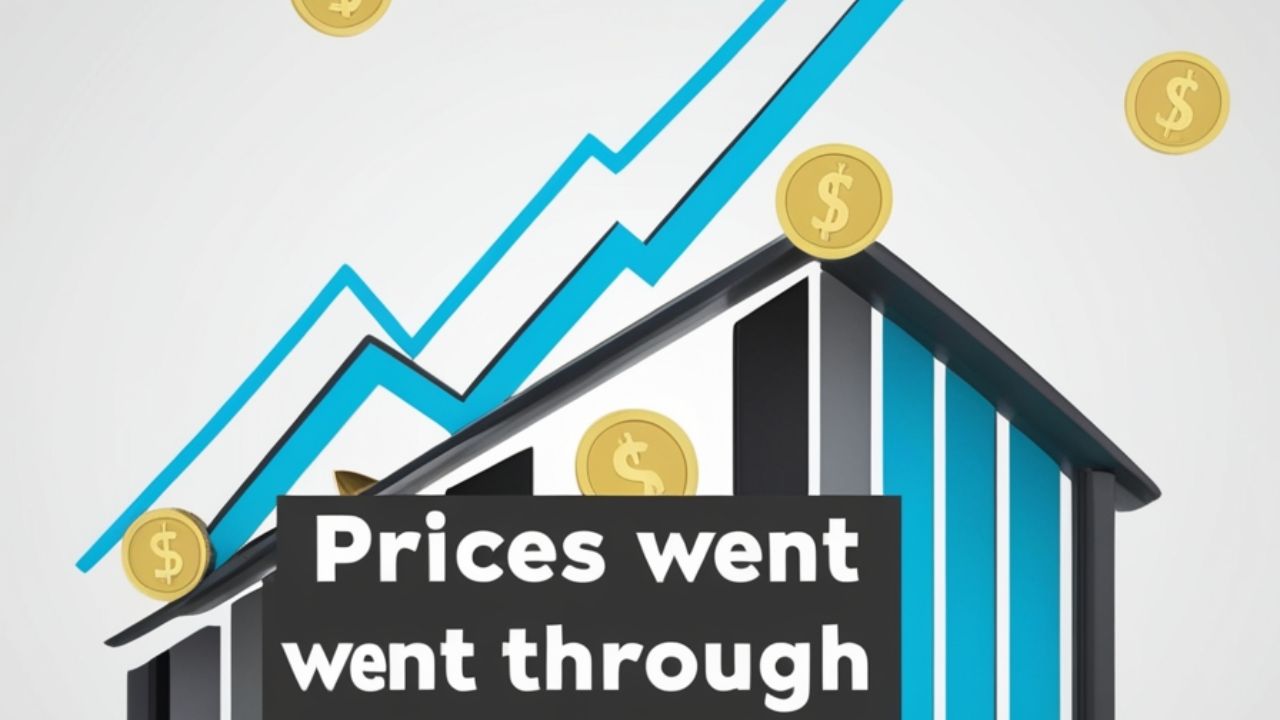Through the Roof Meaning & Examples Explained Simply shows how people use a fun phrase to describe something that grows very fast. When prices, numbers, or feelings rise quickly, we say they go through the roof. It makes language lively and easy to picture.
In stories or talk, this idiom helps people show sudden changes. For example, when someone gets too happy or angry fast, their feelings go through the roof. Idioms, expressions, and phrases like this make English more colorful and fun to learn.
Writers and teachers often use this saying to help students understand strong reactions or sharp increases. It’s common in books, movies, and daily speech. Learning English idioms such as this one helps young learners speak more clearly and naturally.
What Does “Through the Roof” Really Mean?
The phrase Through the Roof means something grows or increases very fast. People use it when prices, numbers, or emotions rise suddenly. It helps describe moments that change quickly and strongly in real life, stories, or everyday talk.
This bright English idiom paints a clear picture of something moving upward with great force. Teachers and writers use it to explain strong feelings or big jumps in amounts. It makes language more interesting and helps young learners understand sudden growth or excitement easily.
- Sudden Increase: It describes something that rises very fast, like prices, numbers, or excitement.
- Strong Emotion: People use it to show powerful feelings such as joy, anger, or surprise.
- Everyday Use: This English idiom helps make speech lively and easy to understand.
Similar Idioms
| Idiom | Meaning | Use Case Example |
| Off the charts | Extremely high level | “Her test scores were off the charts.” |
| Sky-high | Very expensive or high | “Rent is sky-high in the city.” |
| Go ballistic | Extremely angry | “Dad went ballistic when he saw the bill.” |
Origin and Evolution of “Through the Roof”
The Through the Roof idiom started many years ago when people imagined something breaking the roof because it went too high or too fast. It first appeared in old English sayings and later became popular in stories and newspapers.
Over time, this English expression grew common in daily speech. People began using it for fast changes in prices, emotions, or numbers. It stayed because it gives a strong picture of growth and helps speakers share ideas clearly and simply.
Here are three clear points explaining what Through the Roof really means:
- It tells about something that rises very quickly, like prices or feelings.
- It helps people describe big changes in a simple and lively way.
- This English idiom makes speech more interesting and easy to understand.
Historical Usage
- The phrase first appeared in the mid-1900s to describe sudden increases in emotions or prices.
- Newspapers and magazines used it in headlines about rising costs or rates.
- Over time, it became a common idiom in both spoken and written English worldwide.
Literal vs. Figurative Meaning: A Dual-Use Idiom

| Usage Type | Context Example | Meaning |
| Literal | “The cannonball went through the roof.” | Object physically breaking through |
| Figurative | “My stress levels went through the roof.” | A sudden spike in emotional intensity |
When Emotions Go “Through the Roof”
In everyday speech, one of the most common uses of “through the roof” involves emotional reactions. This idiom excels at conveying moments when emotions spike uncontrollably.
Emotions Often Described This Way:
- Excitement: People say their joy went through the roof when they felt very happy.
- Anger: It shows sudden and strong feelings of irritation or rage.
- Surprise: It expresses shock or amazement that happens quickly and intensely.
Scientific Insight
When people feel strong emotions, their body changes quickly. Scientists say the brain sends signals that release energy and make the heart beat faster. This sudden rise in feeling is why the idiom Through the Roof fits emotional moments so well.
Experts link this reaction to chemicals like adrenaline that cause excitement or anger. The scientific meaning behind the phrase helps explain how language connects with body responses. It shows that words can describe real physical changes in a simple and clear way.
“Through the Roof” in Finance, Business, and Data Analysis
The business world loves this phrase. It’s dynamic, visual, and instantly communicates sharp increases in numbers.
Common Financial Applications
In business talk, Through the Roof helps describe prices or sales that rise very fast. People use it when the cost of food, fuel, or products increases suddenly. It shows quick growth in money matters that affects buyers and companies.
Writers often use this financial idiom in news and reports to explain strong market changes. It helps readers understand sharp jumps in demand or profit. This clear phrase makes talking about numbers and business easier for everyone to follow.
| Date Range | BTC Price |
| Jan 2020 | $7,200 |
| Dec 2020 | $29,000 |
| Apr 2021 | $64,000 |
Conversational Usage in American and Global English
- In American English, people use it often to talk about rising prices, strong emotions, or busy workdays.
- In British English, it appears in both emotional and financial contexts with similar meaning.
- Around the world, this English idiom is common in everyday speech, social media, and light conversation.
Regional Usage Snapshot
| Country | Common Use | Note |
| USA | Very common | Especially in media/business |
| UK | Common | Used in emotional contexts |
| Australia | Common | Casual conversations |
Sociolinguistic and Cultural Influence
Idioms like “through the roof” often reflect societal attitudes. This one, in particular, plays on Western associations with escalation and extremes.
Sociolinguistic Observations
- Young speakers often use the idiom on social media to express excitement or surprise in short, catchy posts.
- In workplaces, people use it to describe fast changes in sales, stress, or results.
- In education, teachers use it to teach how idioms show emotions and make English more expressive.
“Through the Roof” in Music, Film, and Pop Culture

Pop culture loves expressive language. The idiom appears in:
Songs:
- The idiom appears in “Through the Roof ’n Underground” by Gogol Bordello, showing energy and movement.
- Many pop and rock songs use similar phrases to express excitement or intensity.
- Musicians use it to describe emotions that grow quickly, like joy, passion, or surprise.
Movies/TV Shows:
- Sitcoms often use the idiom in funny scenes about rent, money, or strong emotions.
- In dramas, it appears when tension or excitement suddenly increases.
- Writers use it to make dialogue more natural and show quick emotional changes.
See also Accordion vs Accordian: Find the Right Spelling Fast
Social Media
Influencers often describe viral stats by saying: “My engagement is through the roof today!”
Literary Use and Rhetorical Effectiveness
- Writers use the idiom to add energy and emotion to their stories or poems.
- It helps describe sudden changes in mood, action, or events clearly.
- The phrase gives strong imagery, making readers feel the intensity of the moment.
Examples from Books:
- Authors use it to show quick emotional reactions, like anger or joy, in characters.
- In novels, it often describes fast growth or success, such as rising sales or fame.
- Many children’s books include it to make language lively and easy to understand.
Grammar, Syntax, and Idiomatic Placement
To use “through the roof” correctly, you need to understand where it fits within a sentence.
Grammatical Structure
- The idiom usually follows verbs like go, be, or send, for example, “Prices went through the roof.”
- It appears after the subject to show a quick increase or emotion.
- The phrase works as a complement, completing the meaning of an action clearly.
Sentence Examples
Writers and teachers use Through the Roof in simple sentences to show fast changes. For example, “My excitement went through the roof when I saw the puppy.” It helps children understand how to express strong feelings or quick increases.
In learning English sentences, this phrase makes practice fun and clear. You can say, “The prices went through the roof after the sale.” Such examples teach how to describe sudden rises in easy and natural ways.
| Verb Used | Idiom Placement | Meaning |
| Go | After subject | Indicates escalation |
| Be | With adjective | Emphasizes current extreme state |
| Send | As result | Describes causing an emotion spike |
Similar Idioms: Comparisons and Contrasts
| Idiom | Tone | Best Used For |
| Through the roof | Neutral | Emotions, prices, reactions |
| Sky-high | Negative | Costs, measurements |
| Off the charts | Positive | Scores, achievements |
| Go ballistic | Negative | Anger, emotional outbursts |
Cross-Linguistic Equivalents: Idioms in Other Languages
Idioms don’t always translate directly, but many languages have equivalents.
Global Comparisons
| Language | Idiom Equivalent | Translation Meaning |
| Spanish | “Subió como la espuma” | “It rose like foam” (rapid increase) |
| French | “A explosé” | “It exploded” (prices/emotion) |
| German | “Durch die Decke gehen” | “Go through the ceiling” (same meaning) |
Common Mistakes and Misinterpretations
- People sometimes use the idiom for slow or calm changes, which makes the meaning unclear.
- It is wrong to use it with feelings that do not rise suddenly, like patience or peace.
- Correct use shows a quick and strong increase in emotion, price, or activity.
People often misuse “through the roof” when:
Many people use Through the Roof in the wrong way when they talk about things that don’t rise quickly. It should describe something that grows fast, like prices, anger, or excitement, not slow changes or calm situations.
Teachers remind students that this English idiom only fits strong and sudden actions. It sounds strange if used for patient or quiet feelings. Using it correctly helps young learners speak clearly and share real emotions or events better.
Examples of Misuse
- Saying “His patience went through the roof” is wrong because patience doesn’t rise suddenly.
- Using it for slow events, like “The tree grew through the roof,” changes the idiom’s meaning.
- It fits only fast or strong increases, such as stress, excitement, or prices.
See also Backyard or Back Yard: Which Spelling Is Right?
Tip: Always ask yourself – “Is this a sudden spike in something measurable or emotional?” If yes, it’s a good fit.
Visual and Statistical Representations
Google Trends: “Through the Roof” (Past 5 Years)
Idiomatic Use by Category
| Category | Frequency of Use |
| Financial | High |
| Emotional | High |
| Structural | Low |
| Literary | Medium |
Real-World Examples: Usage in Sentences
- In news, people say, “Fuel prices went through the roof this week,” to show a sudden rise.
- In daily talk, “Her excitement went through the roof when she won,” shows strong joy.
- On social media, users write, “My views went through the roof,” to share quick online success.
Final Thoughts
The phrase Through the Roof helps people speak about big and fast changes. It makes English more lively and easy to understand. Students can use it to show strong feelings or sudden growth in a fun and simple way.
Learning this English idiom builds clear speaking and writing skills. It teaches how to describe strong actions and emotions in short words. Using it in daily talk helps young learners sound natural and confident when sharing ideas.
FAQs
What does it mean if something is Through the Roof?
It means something has increased suddenly or reached a very high level, like prices or excitement.
Is it threw the roof or Through the Roof?
The correct phrase is “through the roof,” not “threw,” which is the past tense of “throw.”
Does Through the Roof work?
Yes, it’s a common idiom meaning rapid increase or extreme rise in amount or emotion.
What does right Through the Roof mean?
It emphasizes something rising dramatically or intensely, such as “profits went right through the roof.”

Join Bibcia on a journey to master English grammar. Discover easy lessons, writing tips, and practical examples designed to make learning grammar simple and effective.










